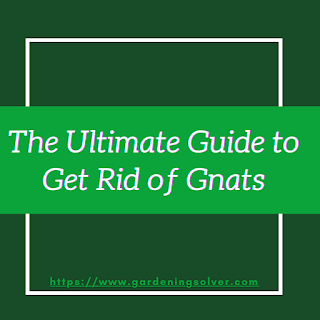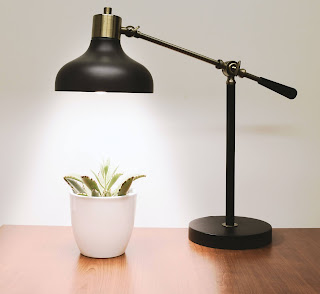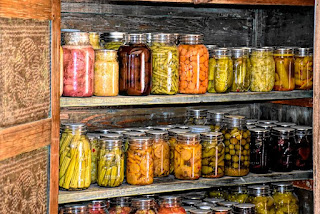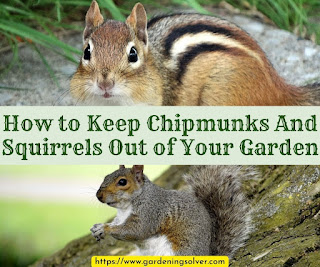How to Get Rid of Gnats
Are you annoyed by gnats constantly popping up everywhere in your garden or among your houseplants? If so, your next step is to figure out how to get rid of gnats from indoor and outdoor plants alike. Fortunately, there are lots of non-toxic ways you can do to keep these pesky insects off your lovely plants.
In this article, we provide effective ways to trap and exterminate gnat infestation, and recommend the best products for treating them. In other words, you'll need to use a trap and management method all at once in order to combat adult gnats and larvae. Read on to learn more.
Disclosure: This post contains affiliate links. We may receive commissions on purchases made from our chosen links with no extra cost to you. Learn more.
Use Mosquito Bits
Mosquito bits is one of a fast and effective way to quickly control gnat and mosquito larvae from populating. The product contains beneficial bacteria called Bacillus thuringiensis israelensis (BTI), which has been approved by the Environment Protection Authority (EPA).
BTI is a naturally occurring organism and it is non-toxic on plants, pets, animals, and people. It specifically targets mosquitoes, gnats, and blackfly larvae. Once the larvae ingest it, it produces crystalline toxins which disturb the digestive system and destroy the larvae before it becomes a flying insect.
To use mosquito bits, mix four tablespoons of mosquito bits with a gallon of water and allow it to soak. After a few minutes, you can water your plants. Repeat the process every week for at least 3 weeks. You can even use mosquito dunks instead of mosquito bits. They all contain the same ingredients. The only significant difference is that bits work much faster while dunks work slowly.
Set Gnat Sticky Traps
Since mosquito bits help to tackle burrowed larvae in the soil, you can also invest in sticky traps to tackle adult gnats. These sticky traps come in a yellow or blue notecard. But, according to the studies, gnats are highly attracted to the color yellow. Therefore you need to use the yellow sticky cards instead of the blue ones.
To use this solution, hang the traps on the branches of trees/large plants or place the holder of the traps directly on top of the soil for small plants. When gnats fly onto the card they get trapped by adhesive and die. Once the sticky traps are covered in gnats, you can discard them and replace with new cards if needed.
Get Katchy OR Zevo
Alternatively to yellow sticky traps, you can opt for an electronic fruit fly trap such as KATCHY or Zevo. These is a unique trapping technique that sends out UV lights to lure gnats and other insects, then its suction feature sucks the flies in. Once they're inside, they get stuck to a replaceable glue board and won't be able to escape.
This trap can run all day, but for amazing results, you should use it at night when bugs are easily attracted to the brightness. With KATCHY, you can notice a change within a few days.
Use Apple Cider Vinegar
A cider vinegar trap is a simple and inexpensive way to catch the gnats. To make it, find a jar or a shallow container, dish soap, and apple cider vinegar. Pour 2 tablespoons of apple cider vinegar and a half cup of warm water into the container. Then add 6 drops of dish soap and 1 tablespoon of sugar and stir gently.
Once everything is mixed, cover the top of the container or jar with plastic wrap and poke a few holes in it. By doing this, gnats that don't drown in the mixture won't escape. Simply place the container with a solution in areas where gnats are a problem. In just a few hours you'll see a dozen of floaters. You can make several jars as much as you need.
Keep the Soil Fairly Dry
Gnats love moist soil, so make sure not to excessively water your plants. Let the top layer of the plant's soil dry out between waterings. This helps to stop the infestation and discourage mold growth. You can test the wetness of soil by fingers but if you're not good at gauging you can buy a moisture sensor gauge.
Additionally, if you notice more gnats around your houseplant, you can set it outside or in the shed to dry out. But if the gnats keep on congregating on it, you should consider repotting them with sterile soil. Sterile soil will help to prevent gnats and also keep your plant healthy. But even after repotting, you can keep on using other treatments and traps.
Remove All Possible Sources of Gnats
Another important step on how to get rid of gnats is to remove things that attract them. They usually get attracted to organic dead leaves and rotten fruits. Therefore you'll need to clear organic debris from the soil regularly in order to prevent gnats from developing. Also, make sure to keep both your indoors and outdoors bins covered as they're also the favorite hiding spot for gnats.
FAQs
Do gnats bite? Yes, some species of gnats do bite humans. But it's only females in the biting gnat species that bite. This is because they require a blood meal to develop their eggs. They suck blood from a variety of sources, including humans, pets, rodents, livestock, and more.
What does a gnat bite look like on humans? Common symptoms of gnat bite are irritation, itchiness, redness, and swelling at the site of the bite. When the bite starts to swell, the itching usually becomes much worse.
How do you treat gnat bites? When you're bitten by gnats, wash the area with soap and water. Once you've done, you use can use anti itch cream or apply a cold compress to soothe the itching. But if you experience extreme and itching unbearable pain, get medical help immediately.
To Wrap Up
Now that you know how to get rid of gnats, the ball is in your court to deal with these frustrating insects. All the above-mentioned methods are effective, simple, and relatively easy. I recommend you to use a combination of these methods to fight all stages of their life cycle. Traps can help you to deter adult gnats and mosquito bits kill any larvae in the soil.
Did you find these techniques helpful? Please leave a comment below!!






Yes! We had huge numbers of gnats in the house this late summer/early fall. Probably attracted to canning activities & baskets of fruit & veggies on the porch. So irritating when trying to read in bed & they're attracted to the only (book) light in the house. Lets me know the Katchy would work just swell for us. Thanks for the info.
ReplyDeleteI'll try the Bits! Thanks for the info, much appreciated!!
ReplyDeleteI'm happy to hear that you found the information useful! Let me know how it goes when you try it out. I'm always glad to be able to share tips that make gardening a bit easier and more enjoyable
DeleteI've done it all, The Mosquitoe bits worked very well, also the yellow sticky traps... I got rid of them last year, but now their back with a " Vengeance " SMH" Thank You"
ReplyDeleteWhere do I get mosquito bits?
ReplyDeleteWhere do I get mosquito bits?
ReplyDeleteHave done and still doing all of these and still have a few gnats ...
ReplyDeleteI was told one fourth cup of four percent peroicside and one cup of water mix and pour on plant
ReplyDeleteThis is a real problem with my houseplants so I learned SO much. Am using the stickies in pots and apple cider vinegar but didnt cover it! Now I am going for Mosquito Bits too! Wish me luck!
ReplyDeleteThanks for the info. They are in my laptop. How do I get rid of them.
ReplyDeleteThank you for the great information. I have taken so many notes to be prepared.
ReplyDeleteI had them in the soil I bought in the Spring of 2024, I have been fighting them that long ,what I have recently been doing Zevo along with vinegar and peroxide I've been catching them that way
ReplyDeleteAlso putting vinegar down my food disposal